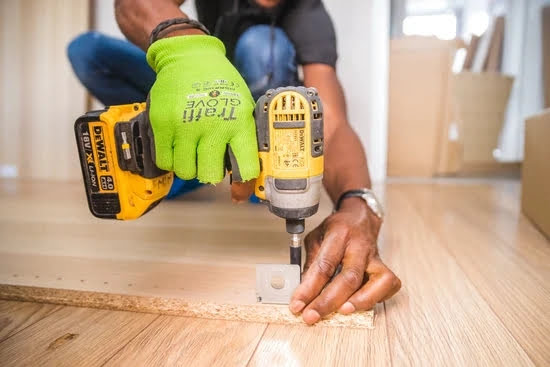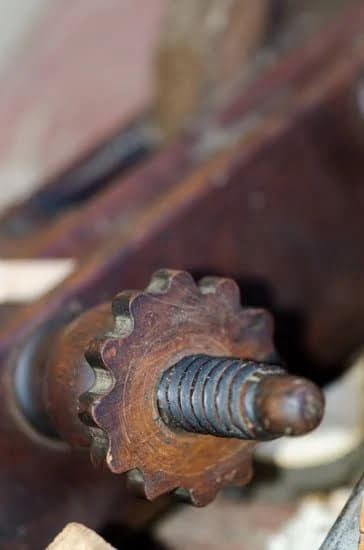Introduction
Woodworking Glue Up is a process that involves gluing wood in order to strengthen it, improve its water resistance and create secure joints. Glue up is an important step in woodworking projects, as not only does it make the final product more attractive, but it helps ensure structural integrity of the pieces being worked on. Additionally, by using glue when constructing a project, you are able to fill gaps or inconsistencies in the wood that may be present due to natural imperfections. This makes for a stronger and better-looking piece of furniture or artwork.Benefits of glue up go beyond providing additional strength and resistance to moisture and environmental conditions: when used correctly, glue can act as an effective gap filler; it can also help reduce noise transfer between different parts of a structure; finally, it can increase the longevity of wooden surfaces by preventing cracks or warping from occurring due to seasonal changes. While some people may view this process as tedious or unnecessary, learning how to correctly execute a glue up is essential for creating quality projects with professional-grade results.
Types of Glue Used in Woodworking Glue Up
Woodworking glue up refers to the technique of joining two pieces of wood together with a strong adhesive material such as glue. There are various types of glues used in woodworking projects, depending on the type of project and the materials being joined together.
One common type of glue used in many woodworking projects is yellow carpenter’s glue, also known as aliphatic resin or yellow wood glue. This type of glue has very good durability, making it suitable for attaching woods that need a strong bond. It also has decent resistance to temperature changes, making it ideal for outdoor projects like decks, furniture, and cabinetry.
Polyurethane glue is another type of adhesive commonly used in woodworking. It is waterproof, absorbs shock very well, and can be painted over once it’s dry. Polyurethane glues are particularly useful for intricate assemblies because they allow some adjustability and repositioning until fully cured.
Hide glue is a popular choice for antique-style furniture pieces and historical reproductions since it’s an all-natural adhesive made from animal hides that has been around for centuries. As hide glue sets slowly and irreversibly there’s no way to adjust it afterwards ” this makes its use best suited to smaller joints that require precision during assembly.
Epoxy resin is another alternative choice for use in woodworking projects requiring tremendous strength but which don’t necessarily rely on clamp pressure during assembly due to its slow set time and long curing process (up to 24 hours). This makes epoxy ideal for filling voids in exterior joinery such as boatbuilding where extra reinforcement may be needed along with solvent resistance and excellent adhesion qualities when cured properly.
Preparing the Wood
Before you start any woodworking glue up, it’s important to properly prepare the wood you intend to join. This involves making sure the surfaces are free of dirt, dust, and other debris that could interfere with a strong bond. One way to do this is by lightly sanding the mating surfaces of each piece. You may also want to use a damp cloth and/or brush to remove any particles stubbornly stuck to the surface. If there is an inconsistency in the width or thickness of either piece, use a plane or a jointer to even them out before applying glue.
It’s also beneficial to apply your glue using an appropriate technique that produces an even spread. Too much glue can cause glue squeeze out which weakens your joint but too little will result in a poorly formed bond. Generally, brushing is the most effective way of applying glue but gluing bottles and rollers can also help ensure consistent coverage. When joining two pieces for clamping, you should leave about 1/8 inch above each wooden surface as room for excess glue build-up; this will help keep your work area clean during setup. Lastly, when storing wood panels, be sure they are stacked flat with supports on the ends so warping doesn’t occur while in storage prior to your glue up process.
Applying the Glue and Clamping the Pieces Together
Before applying the glue, it’s important to thoroughly clean the surfaces of your work pieces and ensure that both surfaces are even and tightly gripped around their edges. Use a damp cloth to remove any debris and use a putty knife or chisel if necessary. Once both surfaces are clean, apply an even layer of woodworking glue to both surfaces using a brush or spatula. Make sure that you spread the glue evenly across the entire surface to ensure that all possible bonds are as strong as possible.
Once all the glue is applied, carefully place each piece of wood in its desired location making sure not to let them slide after being placed. Then, secure the pieces with either clamps or vice-grips depending on which will provide the most stability. When fastening make sure that you use enough pressure so that there is no gap between the two pieces but not too much pressure so that you don’t damage the wood fibers.
Allow your bonded woodpieces at least 24 hours to fully set before putting them under pressure. This will give enough time for the glue to fully cure and create a strong bond between both pieces of wood.
Finishing Work After Glue Up
Glue ups are an incredibly important part of woodworking projects. They provide the finished product with strength and stability and allow for less visible hardware should that be desired. After the glue up process is complete, many steps remain to finish the project and achieve a professional level result.
Sanding or planing the edges of the boards can be critical in giving a smooth, even finish to any project. This will ensure all front edges look uniform and give off a more polished aesthetic. If when planning or sanding, any blank spots become visible due to expand this can be easily filled with wood filler before sanding again. Once the surfaces are completely smooth, they may need additional finishing such as staining, polyurethane, or wax depending on how you want your project to look in the end.
Using fine-grit sandpaper (at least 220 grit) in between each layer of polyurethane helps create a better seal (this will also help prevent peel off and scratches). Finally, if your aim is for precision fit, then utilize tools such as chisels or routers for cutting or trimming specific parts making sure everything aligns correctly across the face of your product. By using these processes on top of glue up techniques you can improve your finished pieces from amateur-quality to professional-level results!
Common Glue Up Mistakes
When it comes to woodworking glue up, there are some common mistakes that can cause problems and derail your entire project. One of the most frequent errors is not allowing for an adequate clamping time. you should give yourself enough time for the glue to properly bond to the wood surfaces. It is best practice to allow for 24 hours of drying before proceeding with your next step or continuing on from the glue-up itself.
Another common mistake that occurs during a woodworking glue up is mixing multiple types of glue together in a single joint. This can cause weakness in the joinery and potentially lead to delamination if not done correctly. Try to only use one type of glue at one particular area or part in your project as this will ensure that you don’t run into any issues with compatibility between glues.
Lastly, another frequently cited problem is uneven clamping pressure when applying the clamps across all parts of the joint. If this happens, it can cause gaps between pieces where glue has been squeezed out but didn’t have time to completely cure before being pressed into position by the clamps. Make sure to avoid this issue by using just enough clamping pressure so that all pieces are securely held together without forcing them out of position – both while they dry and afterwards as well!
Troubleshooting Tips for Common Glue Up Issues
Glue up processes can often seem tricky when you are stuck with a seemingly impossible gluing situation. Typically, these issues can arise from inadequate sands preparation, mismatching of joint profiles, or over-tightening the clamps to force the pieces together. However, with some troubleshooting tips and considerations to increase environmental control during the glue up process, many of these common issues can be avoided.
For starters, it is important to double-check that surfaces are clean and flat before attempting any glue ups. Rough surfaces will create uneven pressure points for your clamping techniques, resulting in gaps and poor results. Also consider sanding down edges such as on box joints or tenons that may not fit properly if they have not been sanded to a uniform diameter prior to gluing up. If this still does not work, an easy fix might be to scratch in shallow slots into the mating surfaces which can help with interlocking them better while clamping.
Particularly when processing tedious tasks where gap filling may be essential such as in frame and panel construction processes, it may be necessary to use a fill ‘plug’ system to build up thicker weaker stresses along joint lines for extra strength and prevent distortion or dishing of panels. For example, used butter knife scrapings built up around loose areas serves as great filler for small gaps due to its low viscosity properties. In addition, consider using higher quality adhesives that offer longer curing times and provide increased strength along joint lines compared to traditional PVA glue varieties.
While these tricks may not always solve all of your problems related to woodworking glues-ups ” troubleshooting with consideration of environmental factors such as temperature & humidity control are key determinants in successful large scale projects and processes which require strong customer experience satisfaction standards throughout product assembly.
Product Reviews
When deciding which type of glue to use for your woodworking project, it can be difficult to know what kind of glue-up is best. Different types of glues have different benefits and drawbacks, and the type of woodworking project you’re doing will determine which glue is the most suitable choice. Before selecting a particular glue, check out reviews from other woodworkers who have used the products in your intended application. They can provide valuable insights into how a product performed for different projects and help you decide if it is up to the task.
In terms of gluing specifically, there are various options available depending on the purpose and type of project. Generally speaking, PVA (polyvinyl acetate) glues are great multipurpose adhesives that are often used in wood joints where strength isn’t an issue. For outdoor projects such as building decks, opt for marine grade epoxy as it is highly moisture resistant. Cyanoacrylate glues offer fast cure times but can also leave a noticeable residue if not applied correctly so take care when using them. For specific applications like laminating or assembling furniture components, contact cement works best because it creates an instant and permanent bond within seconds.
Finally, always make sure you choose a high quality version of whatever glue you’re using; water resistance and improved flexibility may be more important than cost if your work is going to stand the test of time. When purchasing any adhesive product, ask yourself questions such as: Does this glue contain any solvents that could cause discoloration or damage my material? Are there any unique pre-treatment processes I need to consider prior to use? Make sure all safety concerns and recommendations are followed, as improper usage may lead to serious injury or even death in some cases!
Further Reading and Helpful Resources
A great resource for learning about woodworking glue up is Challenging Sticky Situations: A Woodworker’s Guide to Gluing by John Lewis. This book provides an in-depth look at the various types of woodworking glues, their uses and dangers, and guidance on how to determine which glue works best for particular situations.
For more advanced information on woodworking glue up, Woodworker’s Guide to Glue & Clamping by Jonathan Benson offers detailed explanation and illustrations of different clamping techniques used during glue up. It also explains the importance of testing suitable clamps prior to using them with different projects.
Other helpful publications include Understanding Wood Finishing: How To Select and Apply The Right Finish by Bob Flexner and Adhesive Bonding for Woodworkers by Randall Collins. Flexner’s book offers a comprehensive guide on understanding and selecting the right finish for your project to ensure a quality outcome. Collins’ book explains why it’s important not to overlook adhesive bonding when joining pieces of wood together for sturdy bonds.
Summary
Woodworking glue up is a technique used by woodworkers to assemble several pieces of wood together into bigger items for projects. Before applying glue, the woodworker needs to ensure that the wood pieces fit precisely and are clamped tightly together. A properly done glue up process will result in a stronger bond than one created by nails or screws.
The benefits of using woodworking glue up is twofold: Firstly, it allows the creation of larger pieces with more strength than would be normally achievable; Secondly, it creates a smoother end product, as nails and screws leave indentations on the surface which can be difficult to remove completely without specialized tools. Woodworking glue up also allows more complex shapes to be created as well as ensuring that there is no slippage between boards, which can lead to an uneven joints or tension points when wood is clamped down with nails or screws.
Overall, woodworking glue up is a very effective and efficient way to assemble large projects from multiple wooden pieces, helping create stronger and higher quality products. As compared to attaching separate parts with screws or nails, glue up offers not only improved strength but also better results overall in terms of surfaced finish. Furthermore, it provides greater flexibility for complex constructions since joints can be held at any angle and dimensions with precision when a good clamping force is achieved during the gluing process.

Hi everyone! I’m a woodworker and blogger, and this is my woodworking blog. In my blog, I share tips and tricks for woodworkers of all skill levels, as well as project ideas that you can try yourself.





